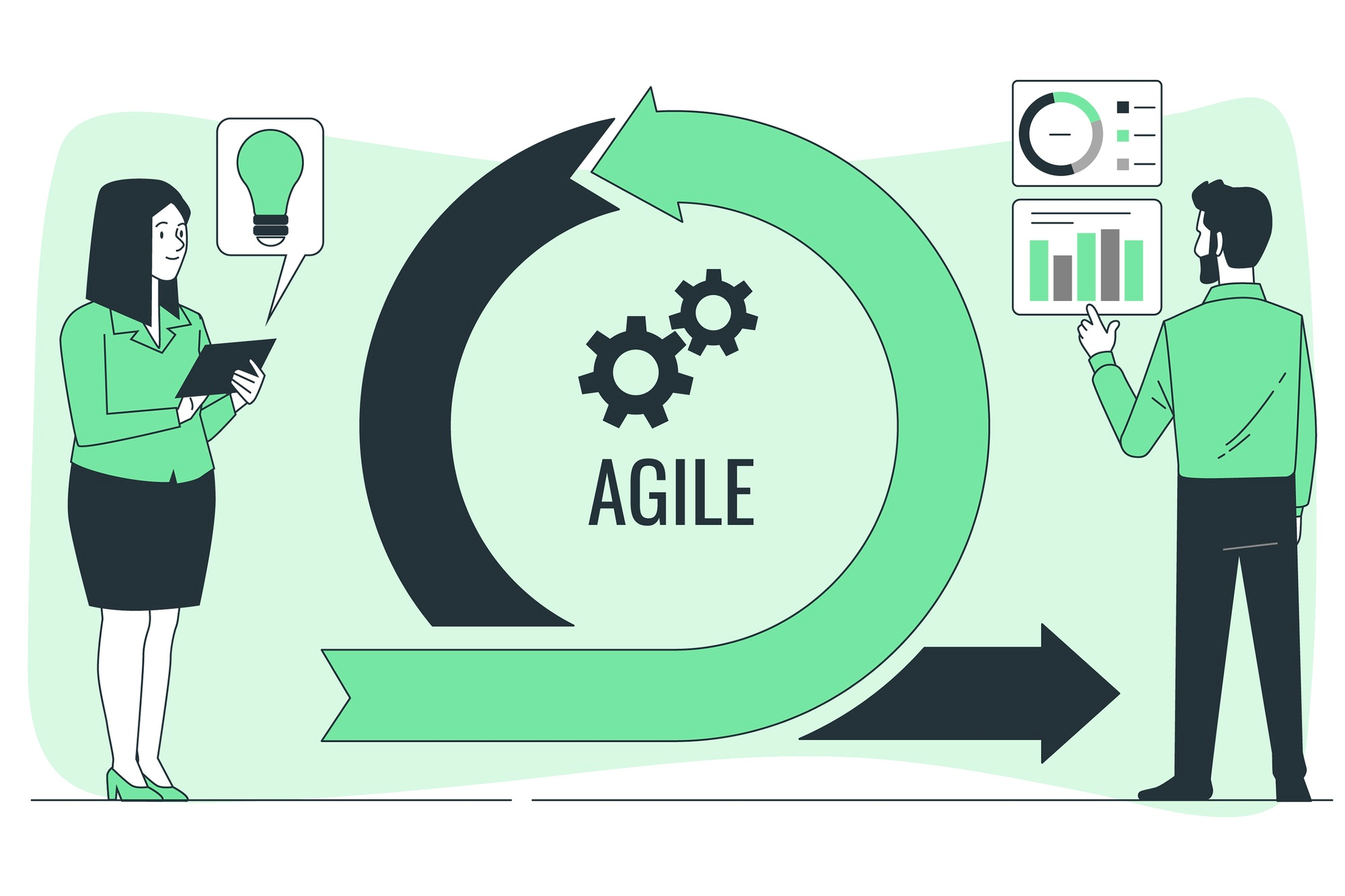In today’s rapidly evolving business landscape, the ability to adapt and deliver high-quality products swiftly is essential.
Agile product development has emerged as a game-changer, enabling organizations to respond to changing market demands while ensuring customer satisfaction.
As businesses embrace this approach, the role of Business Analysts becomes pivotal in ensuring successful Agile implementation.
In this article, we delve into the world of Agile Product Development Best Practices for Business Analysts, exploring key concepts, methodologies, and techniques that empower analysts to excel in their roles.

Understanding Agile Development
Agile development isn’t just a buzzword; it’s a mindset that redefines how software is conceptualized, developed, and delivered.
Unlike the traditional Waterfall approach, Agile emphasizes flexibility, collaboration, and iterative cycles.
As Business Analysts, you play a vital role in bridging the gap between stakeholders and development teams. By understanding the Agile process and its iterative nature, you become the linchpin that ensures user needs are met seamlessly.
User-Centric Approach: Crafting Effective User Stories
Imagine you’re part of an Agile software development, team tasked with creating a new mobile banking app.
Your user stories are like the script of a blockbuster movie – they outline the who, what, and why of each feature. These succinct narratives capture user requirements and paint a clear picture of what needs to be developed.
Crafted with care, user stories become the foundation for a successful product. To make them shine, ensure they are well-structured, with crystal-clear acceptance criteria that leave no room for ambiguity.
Collaborating with Development Teams and Stakeholders
As a Business Analyst, you’re not just a document creator; you’re an orchestrator of ideas and a conduit of collaboration. Your Agile development team relies on your expertise to translate business requirements into actionable insights. Effective communication and collaboration with stakeholders are key.
Picture this: you’re leading a sprint planning session where you facilitate a dialogue between developers, designers, and testers. Your role is like that of a maestro, guiding harmonious collaboration toward a crescendo of innovation.
Ensuring Quality and Perform Validation of Requirements
Business analysts validate requirements to ensure that all requirements support the business’s goals and objectives and meet a stakeholder’s needs.
The purpose of requirements validation is to help stakeholders visualize the future state of the solution.
In the world of Agile, quality isn’t negotiable; it’s the heartbeat of every sprint. As you define quality criteria for user stories and requirements, you’re setting the standard for excellence.
Validation activities become your Sherlock Holmes moments – you meticulously analyze each requirement, ensuring they’re aligned with user expectations.
Just as a watchmaker ensures every gear functions flawlessly, you validate and verify to deliver a seamless user experience.
Tools and Techniques for Agile Requirements Management
Imagine your toolkit as a superhero’s utility belt, packed with tools to streamline and elevate your performance. One such tool is the traceability matrix – your treasure map to track and manage requirements across the Agile journey.
You might also leverage cutting-edge tools that enhance requirement validation, ensuring the pieces of the puzzle fit perfectly. Documenting your findings isn’t just paperwork; it’s a strategic playbook guiding your Agile team toward victory.
Agile Requirements for Regulated Industries
Navigating the waters of regulated industries requires finesse and adaptability. Imagine you’re in a heavily regulated environment, developing software for medical devices. Compliance and validation strategies become your shields, safeguarding against regulatory hurdles.
Change management is your secret potion, ensuring every modification is executed flawlessly. Your role isn’t just about software; it’s about building trust and confidence in every line of code.
The Agile Development Cycle and Requirements Validation
Embrace the Agile development cycle like a seasoned explorer charting uncharted territories. Each phase is a chapter in your epic novel, and within it lies the art of requirements validation. Just as an architect meticulously inspects every beam, you ensure each requirement aligns seamlessly with the larger vision.
An iterative approach isn’t a loop; it’s a symphony of progress where you fine-tune requirements with each iteration, creating a harmonious melody of validated user needs.
Adapting to Changing Requirements
In the dynamic realm of Agile product development, change is not a disruptor but an essential element. As a Business Analyst, your ability to adapt to evolving requirements is a superpower. Agile acknowledges that requirements can shift, and you, as the translator between stakeholders and developers, play a crucial role in facilitating this adaptation.
By fostering an environment where changes are embraced and communicated effectively, you ensure that the end product remains aligned with the ever-changing market landscape.
Continuous Improvement and Retrospectives
Agile development isn’t a destination; it’s a journey of continuous improvement. This is where retrospectives come into play. Just as a conductor reviews a symphony performance, you facilitate retrospectives to examine what went well and what can be enhanced.
By engaging your Agile team in reflective discussions, you create a space for collective learning and refinement. These moments of introspection drive the evolution of both processes and relationships, fostering an environment of mutual growth and innovation.
Conclusion
As we conclude this journey through Agile Product Development Best Practices for Business Analysts, we glimpse the tapestry of your role.
You’re not just a liaison; you’re a maestro of collaboration, a guardian of quality, and a visionary of user needs.
With well-written requirements, you sow the seeds of success. Remember, Agile isn’t just a methodology; it’s a mindset, a way of life.
By embracing Agile practices and perfecting the art of requirements validation, you become the architect of products that shape the world – one user story at a time.

People Also Ask (FAQs)
What is the role of an Agile model in product development for Business Analysts?
An Agile model is a flexible framework that guides the iterative and incremental development of products. Business Analysts use the Agile model to adapt to changing requirements, collaborate with teams, and ensure constant feedback, fostering a dynamic environment conducive to successful product development.
How do Business Analysts create effective test scenarios in an Agile environment?
In an Agile environment, Business Analysts collaborate closely with development and testing teams to create well-defined test scenarios. These scenarios align with user stories and acceptance criteria, ensuring comprehensive testing and validation of system requirements.
What is the significance of validating requirements and maintaining a requirements document in the development process?
It involves confirming that they accurately represent user needs. Business Analysts ensure requirements verification through constant collaboration, validation activities, and peer reviews. Maintaining a requirements document ensures a clear reference point for all stakeholders, guiding the development process toward meeting system requirements effectively.



